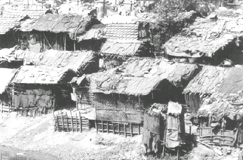Life in the fast lanes
 nature flourishes most alone, far from the towns where (humans) reside, wrote the American philosopher Henry David Thoreau. According to him, cities do not have an ecosystem of their own. Frederic Clements, the American plant ecologist went a step further and describes habitats as a series of closed loops that together form a self-regulating system. Clements also describes how plant communities develop through successive stages, eventually settling into a relatively stable stage. The belief that nature tends towards balance and harmony finds its roots in Clement's ideas ( New Scientist , No 2178).
nature flourishes most alone, far from the towns where (humans) reside, wrote the American philosopher Henry David Thoreau. According to him, cities do not have an ecosystem of their own. Frederic Clements, the American plant ecologist went a step further and describes habitats as a series of closed loops that together form a self-regulating system. Clements also describes how plant communities develop through successive stages, eventually settling into a relatively stable stage. The belief that nature tends towards balance and harmony finds its roots in Clement's ideas ( New Scientist , No 2178).
Till very recently, environmental scientists took this theory for granted. But many ecologists no longer see it this way. They believe that relationships within an ecosystem are influenced by factors that are outside a given habitat. Besides, individual habitats themselves are not as harmonious as Clements suggested. A grassland fire, an infestation of rodents or a bad storm, for instance, can break what were once thought to be homogenous landscapes into a series of distinct patches.
Steward Pickett, an ecologist with the Institute of Ecosystem Studies in Millbrook, argues that a modern metropolis is like a living organism. He says if a Martian visited a metropolis on Earth, it would find cities no different from rainforests and coral reefs. It would look at cities being governed by biological and physical processes smilar to that of living organisms like human beings. That is to say, a city, to sustain itself has to consume certain things (fossil fuel) and then excrete (pollution). Picket's analogy is based on a project that he has undertaken as director for the Baltimore Ecosystem Study. It is the first project of its kind where a city is being looked at as an ecosystem. The researchers' goal is to understand Baltimore's hydrology, its microclimate, its nutrient cycles and its flow of energy and to figure out predator-prey relationships and the competition among species in the habitat.
"One of the biggest challenges we have in ecology is understanding the role of human institutions in ecological processes,' says Pickett. To do that, researchers are attempting innovations with standard ecological models to incorporate social aspects of human behaviour like legal, political and educational interests, and material actions like constructing roads, buildings and bridges. They argue that these human actions interact with biology, geography and chemistry around them in ways similar to those found in old growth forests. If these connections are made, the researchers say, it will go a long way allowing civic planners to accommodate nitrogen and carbon in their budget.
But still, it is hard at first glance to see how cities fit into any ecological model. For one thing, they involve massive inputs and outputs
